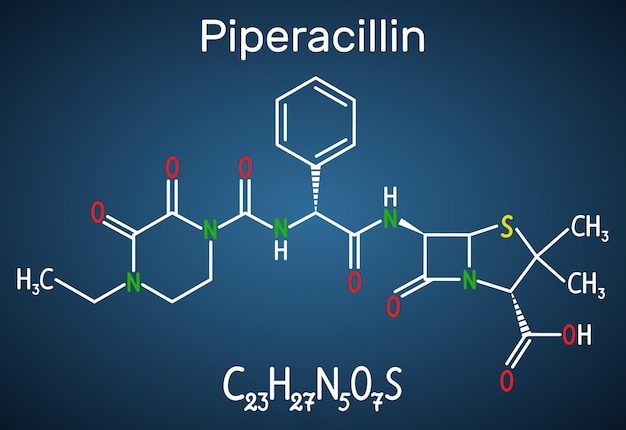In recent research conducted by Chao-An Lin, Nanako Hayashi, Claire E Badenhorst, and Kazushige Goto, the impact of amino acid (AA) supplementation on iron regulation following endurance exercise was explored in a detailed study titled “Effect of Amino Acid Supplementation on Iron Regulation after Endurance Exercise.” The investigation sought to understand how pre-exercise amino acid supplementation could alter the body’s ability to manage iron after a session of prolonged physical exertion, which is critical because maintaining optimal iron levels is essential for athletic performance and overall health.
The study involved ten healthy male volunteers who participated in a structured experiment under controlled conditions, employing a randomized, double-blind, crossover design. Each participant was administered either an amino acid supplement or a placebo over five consecutive days, followed by a 60-minute treadmill run at 70% of their maximal oxygen consumption. Blood samples were collected at various times: before exercise, immediately after, and 1 and 3 hours post-exercise to measure different biomarkers such as serum hepcidin, interleukin-6 (IL-6), and glycerol levels.
Findings revealed that while IL-6 and glycerol levels increased significantly following amino acid supplementation, iron regulation indicators such as serum iron and ferritin remained unchanged. These outcomes suggest that while amino acid supplementation can enhance certain inflammatory and metabolic responses to exercise, it does not modify post-exercise iron status in healthy males. This study adds valuable insight into the nuanced effects of amino acids on the body’s physiological responses to endurance exercise.
The nexus between endurance exercise and iron metabolism is an evolving area of research relevant for both athletes and those concerned about nutritional health. Iron plays a crucial role in bodily functions, most notably in oxygen transport and energy production, essential for athletic performance. It is well-documented that athletes, particularly those engaged in endurance sports, are at risk of iron deficiency which can impair muscle function and exercise capacity. As such, understanding how various interventions, such as nutrient supplementation, affect iron metabolism after exercise is of prime importance.
The study by Chao-An Lin, Nanako Hayashi, Claire E Badenhorst, and Kazushige Goto, focuses on the impact of amino acid supplementation—a popular nutritional strategy among athletes—on iron regulation post-exercise. Amino acids are the building blocks of proteins and play various roles in body functions including muscle repair and the synthesis of enzymes and hormones. Commercially available amino acid supplements are often promoted for their potential to improve recovery times, reduce muscle soreness, and enhance athletic performance. Given these properties, investigating how such supplements could influence iron regulation after strenuous exercise fills a specific gap in sports science research.
Prior investigations have shown that exercise, particularly prolonged endurance exercise, triggers an inflammatory response characterized by the release of cytokines such as interleukin-6 (IL-6), which in turn influences iron metabolism by increasing hepcidin levels. Hepcidin is a regulatory hormone that decreases iron absorption in the intestine and blocks iron release from body stores. This response is presumably a protective strategy by the body to limit iron availability in the bloodstream during acute stress or infection, potentially reducing the risk of bacterial proliferation. However, for athletes and those heavily engaged in endurance activities, this response can contribute to iron deficiency over time.
The hypothesis driving the research by Lin et al. was likely based on the premise that amino acids, given their role in promoting anti-inflammatory effects and recovery, might counteract the exercise-induced spike in hepcidin, thereby maintaining more favorable iron levels post-exercise. The study placed a specific emphasis on determining the effectiveness of pre-exercise amino acid supplementation on serum iron and ferritin levels as indicators of iron regulation.
However, the study’s findings displayed no significant alteration in iron regulations despite changes in IL-6 and glycerol levels following supplementation. These results imply a more complex interaction between amino acid supplementation and iron metabolism than previously anticipated. This outcome furthers the need to reevaluate the efficacy of amino acids in this specific context and encourages deeper exploration into the mechanisms governing iron homeostasis post-exercise.
Understanding these dynamics is crucial, not only for enhancing athletic performance through optimized recovery and nutrition strategies but also for broader implications concerning health maintenance in populations engaged in regular endurance activities. This research sets the stage for subsequent studies that might focus on different dosages, types of amino acids, or the timing of supplementation. It also highlights the importance of personalized nutrition strategies, particularly in sports where iron deficiency is prevalent and can significantly affect performance and recovery.
The methodology employed in the research by Chao-An Lin, Nanako Hayashi, Claire E Badenhorst, and Kazushige Goto was meticulously planned to assess the impact of amino acid supplementation on iron regulation after endurance exercise.
**Participants and Design**
The study was conducted using a randomized, double-blind, crossover design, which allowed each participant to serve as his own control. This design minimizes the variability that can often affect the outcomes of such studies. Ten healthy male volunteers, all of whom were non-smokers with a background in endurance training, participated in the study. The inclusion criteria ensured that participants had no known health issues or iron metabolism disorders that could potentially skew the results. Each participant received both the amino acid supplement and a placebo in a random order, with a washout period of two weeks between the two trial phases.
**Supplementation and Exercise Protocol**
The amino acid supplement consisted of a blend of essential amino acids, administered in a predetermined dose consistent with doses typically recommended for endurance athletes. Participants consumed the supplement or placebo for five consecutive days leading up to the exercise session. On the exercise day, after fasting overnight, participants took their final dose one hour before beginning their treadmill session.
The exercise consisted of a 60-minute run on a treadmill set at 70% of each participant’s maximal oxygen consumption (VO2 max), a level considered high enough to stimulate the physiological systems being studied without causing excessive fatigue or stress, which could have interfered with the results.
**Blood Sampling and Biomarker Analysis**
Blood samples were collected at four critical points: pre-exercise, immediately post-exercise, 1-hour post-exercise, and 3-hours post-exercise. These samples were then analyzed for various biomarkers of iron metabolism and inflammatory response. Serum iron and ferritin were measured to assess iron regulatory status, while interleukin-6 (IL-6) and glycerol levels were analyzed as markers of inflammation and lipolysis, respectively. IL-6 was of particular interest due to its known role in the up-regulation of hepcidin, a central hormone in iron metabolism.
**Analytical Techniques**
The biomarkers were quantified using standard methods validated in clinical and exercise physiology research. Serum iron levels were measured via spectrophotometry, a common technique for iron assays, while ferritin was analyzed using an immunoassay kit, providing high specificity and sensitivity. IL-6 levels were determined using an enzyme-linked immunosorbent assay (ELISA), which is standard for measuring cytokine levels due to its accuracy and reproducibility. Glycerol levels were measured through enzymatic hydrolysis, followed by spectrophotometric detection.
**Statistical Analysis**
Data were analyzed using repeated-measures ANOVA to compare the effects of the amino acid supplementation versus the placebo across different time points. This statistical approach allowed for the evaluation of both the treatment effects and the temporal changes due to exercise. Where significant effects were found, post-hoc tests with Bonferroni correction were applied to identify specific pairwise differences. Throughout the analysis, a p-value of less than 0.05 was considered statistically significant.
This rigorous and detailed methodology not only ensured the reliability and validity of the data collected but also allowed the researchers to draw comprehensive conclusions regarding the effects of amino acid supplementation on various parameters related to iron metabolism and inflammation following endurance exercise. The outcome of this study is significant in contributing to the developing understanding of nutritional strategies in sports science, specifically in the context of endurance sports where iron metabolism plays a critical role in performance and recovery.
**Key Findings and Results**
The investigation undertaken by Chao-An Lin, Nanako Hayashi, Claire E Badenhorst, and Kazushige Goto provided insightful results regarding the interaction between amino acid supplementation and iron metabolism post-endurance exercise. Notably, despite significant increases in markers of inflammation and metabolism, such as interleukin-6 (IL-6) and glycerol, the research found that these changes did not correspond with alterations in indicators of iron regulation, specifically serum iron and ferritin levels.
**Inflammatory and Metabolic Markers**
The study revealed a significant increase in IL-6 levels immediately after and 1 hour post-exercise in the amino acid supplemented group compared to the placebo group. IL-6 is a cytokine involved in the inflammatory response and has been linked to the upregulation of hepcidin post exercise. The elevated levels of IL-6 were hypothesized by the researchers to potentially alter iron metabolism by influencing hepcidin levels. However, the results did not show a corresponding increase in hepcidin, suggesting that while amino acids may enhance the inflammatory response to exercise, they do not necessarily impact hepcidin-driven iron metabolism in the short term.
Similarly, glycerol levels, an indicator of lipolysis, were also higher post-exercise in the amino acid supplemented group. This suggests an increased rate of fat breakdown, which aligns with the known metabolic effects of amino acids. These results confirm that amino acid supplementation can enhance certain aspects of the metabolic response to exercise but the data did not directly translate into changes in iron regulation.
**Iron Regulation Markers**
The primary focus of the study was on iron regulation through markers like serum iron and ferritin. Despite the observed changes in IL-6 and glycerol, the levels of serum iron and ferritin remained statistically unchanged across both groups. This indicates that short-term amino acid supplementation does not affect the iron status immediately following endurance exercise in healthy males. Iron regulation is complex and may be influenced by multiple factors including the baseline iron status of the subjects, the duration of supplementation, and the specific amino acid composition used in the supplement.
The unchanged iron and ferritin levels post-exercise, in the face of increased inflammatory activity, suggest a potential disassociation between acute phase responses and iron regulation in the context of amino acid supplementation. This could imply that while amino acids may prime the body for increased inflammatory and metabolic activity, they do not necessarily impose a direct regulatory effect on iron mobilization or storage within the acute timeframe studied.
**Implications for Nutritional Strategies in Endurance Sports**
The findings from this study are critical for athletes and sports nutrition professionals. Understanding that amino acids may not affect iron levels in the short-term can influence dietary and supplementation strategies around training and competition. For athletes concerned with iron deficiency or management, these results suggest that amino acid supplementation should not be relied upon solely to influence iron status.
Furthermore, as endurance sports can often lead to a reduction in iron levels due to hemolysis, sweat losses, and gastrointestinal bleeding, among other factors, athletes and their advisors must consider other strategies for maintaining optimal iron balance. This includes dietary adjustments, timing of nutrient intake, and perhaps the use of specific iron supplements where appropriate.
The research by Lin et al. underscores the complexity of nutrient interactions within the body and encourages further research. Additional studies might explore different types or combinations of amino acids, longer durations of supplementation, and varied exercise intensities and durations to fully understand the role of amino acids in iron metabolism and wider metabolic responses in endurance activities.
By extending the knowledge in this area, future research can help optimize nutrition strategies that support both the health and performance of endurance athletes, backing the integration of science in sports nutrition practices reliably.
**Future Research Directions and Conclusion**
The study by Chao-An Lin, Nanako Hayashi, Claire E Badenhorst, and Kazushige Goto opens several avenues for future research in the field of sports nutrition and iron metabolism. Despite the rigorous methodology and insightful findings, the study’s results bring to light the complex interplay between nutrient supplementation and biochemical processes in the human body, particularly under the strain of endurance exercise.
### Future Research Directions
1. **Longer Duration of Supplementation**: Future studies could explore the effects of prolonged amino acid supplementation on iron regulation to determine if a longer duration might affect iron metabolism differently.
2. **Different Types and Combinations of Amino Acids**: Investigating various amino acids individually or in different combinations could provide insights into whether specific amino acids are more effective in influencing iron regulation.
3. **Varied Exercise Intensities and Durations**: Varying the intensity and duration of exercise could help in understanding the thresholds at which amino acid supplementation might begin to significantly affect iron metabolism.
4. **Population Diversity**: Expanding research to include female athletes, different age groups, and people with different baseline iron statuses could provide a broader understanding of how amino acid supplementation affects iron regulation across diverse groups.
5. **Mechanistic Studies**: More detailed biochemical studies could help elucidate the precise mechanisms through which amino acids might interact with iron metabolism pathways, providing clarity on the role of hepcidin and other regulatory proteins.
6. **Comparative Studies with Other Nutrients**: Understanding how amino acids interact with other nutrients that affect iron absorption and metabolism, such as vitamin C or vitamin D, could lead to more comprehensive nutrition strategies.
### Conclusion
The implications of this research are profound, especially for the sports community where endurance athletes continuously seek strategies to enhance performance and expedite recovery. This study reinforces the understanding that while amino acids are beneficial for various aspects of health and athletic performance, their role in iron regulation immediately post-exercise appears limited. It encourages a reassessment of how dietary supplements are perceived and utilized in sports settings.
For sports nutrition professionals, the findings suggest that relying solely on amino acid supplementation for managing iron levels may not be effective. Instead, a multifaceted approach that includes diet, supplementation, and training adaptations should be considered. This holistic strategy is more likely to address the nuanced needs of athletes, particularly in managing crucial aspects like iron metabolism.
Ultimately, the journey of integrating science into sports nutrition practices is ongoing. Each study builds on the last, progressively enhancing our understanding and application of nutritional science to support athletic health and performance. The study by Lin et al. is a valuable contribution to this evolving field, serving both as a reference point and as a spark for further inquiry.
The exploration of amino acids in the context of endurance exercise opens up a dialog between researchers, clinicians, and athletes about the optimization of nutrition to support not just performance but also long-term health. As research continues to unfold, the sports community can look forward to more tailored and effective nutrition strategies that reflect both the complexity of human physiology and the rigor of scientific inquiry.









